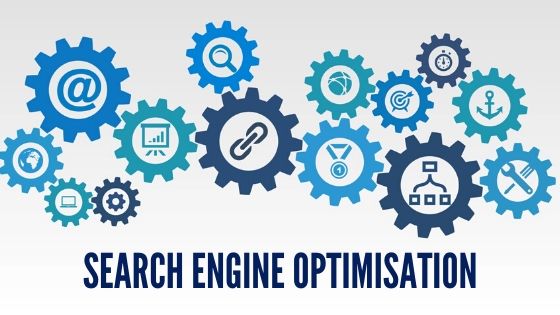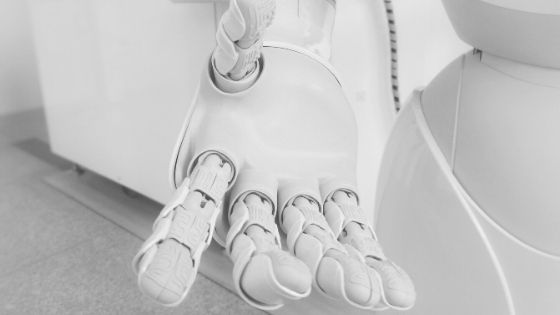Time- 4-5 minutes
Is Artificial Intelligence the Janet from The Good Place?
Don’t we all love when we visit our favorite coffee shop and the barista remembers our order or when we visit our favorite store and the store employee greets us by saying our name. It adds personalization and familiarity to the conversation.
Have you ever wondered why you get certain movie recommendations on Netflix and why your friend gets others? Or why the Starbucks app recommends a hot chocolate on a cold winter morning? These recommendations also add that touch of personalization which we all appreciate.
The difference is the barista or the store employees are humans, and the recommendations given by Netflix and Starbucks are by using algorithms, machine learning, and data. Of course, it does require human judgement but you would be surprised to see how far Artificial Intelligence has come since its inception.
From marketing automation, image recognition, data analysis, and predictions to communications to name a few, artificial intelligence has impacted the field of marketing in unprecedented ways. It can be seen as the type/types of technology that can simulate human intelligence.
As John McCarthy, the founding father of artificial intelligence would define it, It is the science and engineering of making intelligent machines, especially intelligent computer programs. It is related to the similar task of using computers to understand human intelligence, but AI does not have to confine itself to methods that are biologically observable.
Artificial intelligence will nurture true data-driven marketing in the form of a more personalized educated marketing process and streamlined operations, in a cost and time effective manner. According to a survey by Salesforce, 51% of marketers currently use AI, and 27% are expected to incorporate the technology in 2019 for seamless customer experience. The industry is expected to grow up to $40 billion by 2025 from $6.5 billion in 2018.
Some of the ways that artificial intelligence has been used in marketing are:
- Customer Segmentation: Through artificial intelligence, digital marketers can segment a large amount of data in only a few seconds, providing powerful insights into the buyer’s journey. The insights can be used to execute three areas of campaigns: segmentation, tracking, and keyword tagging. Some companies that provide these services are Amazon, Apple, Amplero, Conversica, Salesforce, Adobe Marketo, and Afiniti. In the last few years, Sephora has integrated AI in its marketing strategy to provide more personalized and intelligent customer experiences. It is based on a technology that uses face tracking and computer vision. This omnichannel retail approach has helped Sephora thrive in the declining retail industry. In this highly curated experience, customers can interact with Sephora in the same way as they would with the in-store sales rep. This is done by weighing the locations, previously viewed items and items purchased. The tools that they have incorporated include a Sephora Virtual Artist, Tap & Try, and Color IQ. In simple words, they use AI to help their customer virtually try makeup, match their skin tone to a foundation or sample a fragrance via a touchscreen and scented air. Convenience and Personalisation both are ticked off in this strategy!
“If you walk into a Sephora five or ten years from now, every aspect of your experience, from what you see to the products you are recommended will be customized based on your face shape, your sales history, and your preferences.” – Parham Aarabi,CEO of ModiFace
- Hyper Personalisation: AI can predict customer behavior which enables marketers to anticipate the next move of their target audience. Using real-time and behavioral data, marketers can provide hyper-personalized communications and services to their customers. Some of the benefits of hyper-personalization include highly targeted ads, increased customer loyalty, and seamless customer experience. As a result, marketers will turn from reactive to proactive planners. Starbucks collects a lot of data through its 90 million transactions a week like purchase history, time of the day you visit, which Starbucks you visit the most, and where you live. Not just this, Starbucks also makes recommendations based on the weather, holidays or special promotions, going beyond just the birthday offers. Through the use of Mobile Order and Pay Checkout, they have been able to double the customer response rates over segmented email campaigns. The digital flywheel program recommends customers treats or new products, they didn’t even know they wanted. And the Virtual Barista enables customers to place their order through voice commands or messages. Now that’s a company taking an extra step towards hyper-personalization.
- Social media sentiment analysis: There are millions of customers on social media and tons of competitors. How do you cut through the noise and analyze what your target market is saying? How do you measure social sentiment? Solving customer queries, lead generation, optimising marketing strategy, measuring social media performance, and increasing customer engagement, are some of the benefits of using social media sentiment analysis. AI or emotion AI analysis sentiments from various written texts, images, and recordings which mention your brand’s name. AI intercepts certain keywords in these written texts to classify them as negative, positive or neutral. The idea is that the more you know, the better you can market!
- Chatbots: Just like Sephora is pioneering the digital revolution in the beauty industry, it was also the first beauty brand to use Chatbots for a more natural-feeling conversation between the store and its clients. Chatbots are computer programs that talk to your customers through a conversational interface. They help your customers find solutions regardless of what device they are using or where they are using it from. It is absolutely there choice if they want to use or ignore it. Here is a very interesting read by Hubpost on use of bots in marketing. Siri or Cortona are powered through Artificial intelligence as well. Another example is Slack where chatbots monitor team conversations and provide important statistics or facts at relevant points.
While for-profits have integrated artificial intelligence into their marketing strategy, non-profit organization are far behind in the adoption of a full portfolio of marketing toolbox, let alone artificial intelligence. Due to lack of funds, lack of trained personnel and lack of knowledge, the use of the advanced marketing strategies by non-profit organizations has been limited. Along with the usual challenges of non-profit organisations comes the challenges of adopting AI, including where does the opportunity lie, developing a clear AI strategy, how to source & sort data, finding skilled people, and which AI platforms to use.
One of the biggest challenges that non-profit organizations face is keeping their mission at the center of all the activities that they undertake. Artificial intelligence can help non-profit organizations remain true to their mission through marketing automation, personalized marketing communication through market segmentation and through predicting customer behavior. In part 2, I will examine how AI can be used in a non-profit organisation’s marketing strategy and what are the specific challenges faced by them.
Resources:









Leave a comment